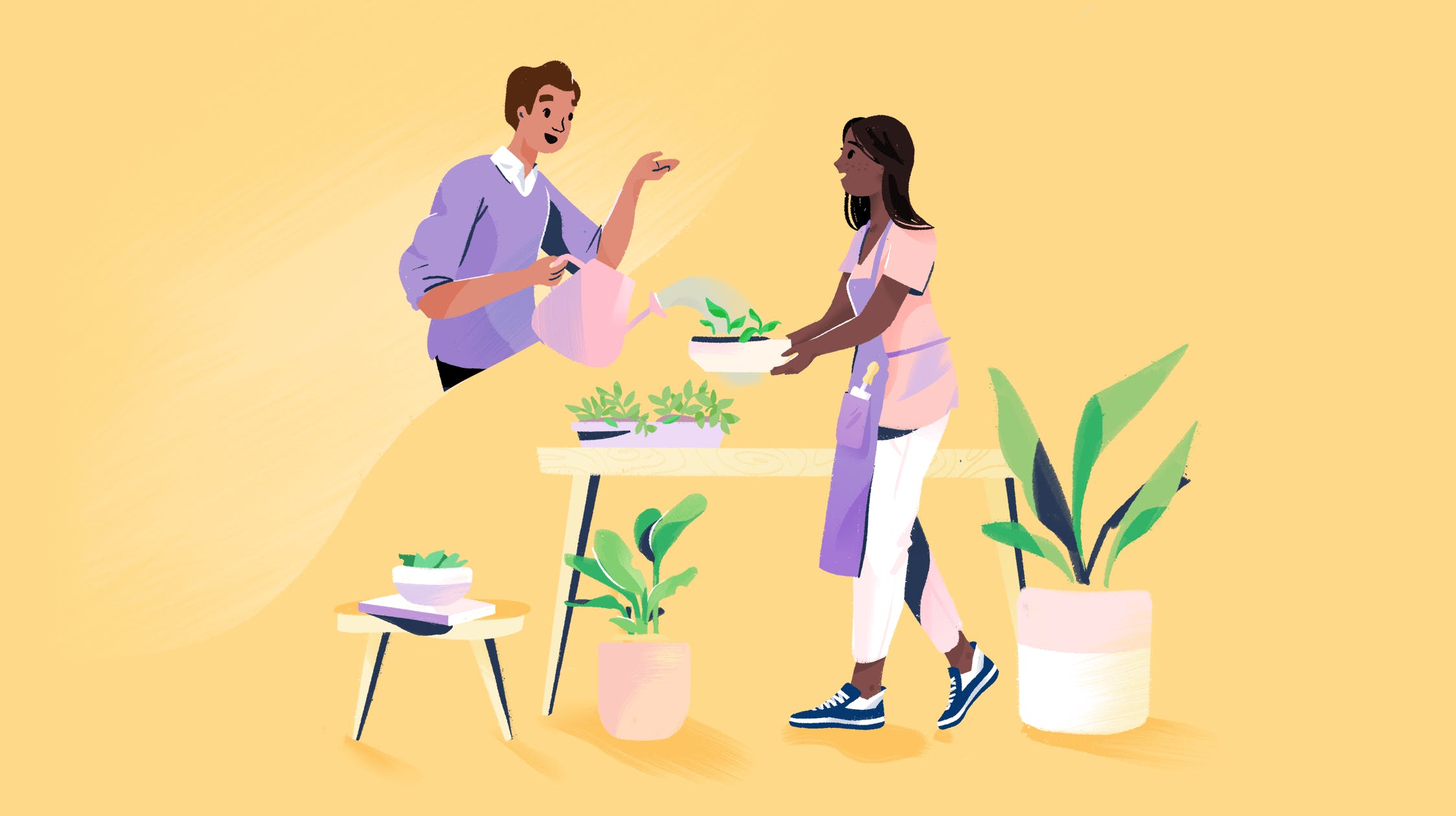How to Identify and Optimize Customer Experience Touchpoints


Customer touchpoints are specific places in the customer journey where prospects and customers interact with your company. Those touchpoints might be direct interactions, such as getting a demo from your sales team, or they can be indirect interactions, such as reading a blog post you published.
Each of your customer touchpoints has a direct impact on your overall customer experience — the way prospects and customers perceive your company. A poor experience at one touchpoint can easily degrade the customer's perception of multiple positive historical experiences at other touchpoints.
How to identify your customer touchpoints
Some of your customer touchpoints should be obvious. If your Support or Sales teams interact with customers, those interactions — support conversations, live product tutorials, and sales calls and demos — are all customer touchpoints.
Others require research or data to discover. For example, using Google Analytics, you can see the different channels that send traffic to your website by visiting your Acquisition Overview report. From there, you can drill down into any specific channel to see exactly where your customers are coming from:
Filtering your "Organic" report by "Source" will show you which search engines are sending traffic to your website, and filtering by "Landing Page" will show you which pages those visitors view most often.
Filtering by "Social" will show you which social networks are sending traffic to your website.
Filtering by "Referral" will show you other websites that have linked to your website and are sending traffic to your site.
Digging through each of the acquisition reports will give you a good sense of what your external customer touchpoints are.
Another helpful way to identify your customer touchpoints is to ask your customers how they heard about your company. This is helpful for identifying touchpoints that won't show up in your data, such as a referral from a friend or seeing an ad for your business in a magazine.
If you conduct customer interviews, you can ask customers directly. Otherwise, you could send a survey to all of your existing customers to gather the data, or you could add the question to your signup form to gather the data when a prospect signs up for a trial or makes a purchase.
How to optimize 11 common customer experience touchpoints
Below are 11 of the most common places where prospects and customers interact with brands, plus tips on how you can optimize the customer experience at each touchpoint.
1. Company website
When it comes to optimizing your website's homepage and product landing pages to create a great customer experience, the most important thing you can do is describe your products and services as clearly as possible.
Many landing pages are written in a way that assumes the visitor is already familiar with the product, which forces brand new visitors to dig through your website to try and figure out what your product does. This creates a poor experience and often forces prospects to look elsewhere for solutions.
If your product is difficult to describe within the confines of your preferred landing page design, consider either embedding videos or linking from your landing page to blog posts or help documents to make it easy for prospects to find more in-depth descriptions.
Another important part of making your website clear is being transparent with pricing.
If for some reason you can't list your actual pricing on your site, at least include some information that gives visitors a sense of whether or not they can afford your product. Check out this great post by copywriter Joel Klettke on how to do this gracefully and effectively.
Finally, being clear also means avoiding the use of jargon or other terms visitors might be unfamiliar with. De-Jargonizer is a great tool for identifying uses of jargon in your copy that might confuse site visitors.
2. Company blog
When writing content for your company blog, it's important to remember that your blog can be a source of information for lots of different types of visitors — not just prospects who are actively shopping for a solution you provide.
Current customers, those who might become customers tomorrow, and those who might become customers five years from now are all reading your blog, so the best thing you can do to create a great experience is publish high-quality, helpful, and actionable content.
Not every post you publish needs to be a sales pitch. Publishing content that helps your audience learn something they need to know or do something more efficiently creates an incredible affinity for your brand — even if it doesn't result in an immediate conversion.
While your blog certainly can produce immediate conversions, more often your longer-form content is a long-term bet. If you're publishing the best content on the internet about whatever subject you're writing about, that content is introducing your brand to everyone who reads it and building trust with that audience.
Maybe that audience doesn't need to buy your product today, but they might a year from now. And if they've developed a lot of trust in your brand over the last year, your product will be the first one they consider.
3. Social media
Lots of online marketing articles will tell you that you must have a profile on every social media site: Imagine how many sales you might be losing right now by not posting videos to TikTok.
The reality is that it's usually better to focus on a few social media sites — those where your customers most commonly spend their time and where you can actively maintain your profiles.
Customers may reach out to you with questions on social channels that you don't monitor closely. If you don't respond, they'll inevitably feel neglected. Remember, social media sites are designed to be social: If you can't engage with people on a specific social channel, don't build a profile on that channel.
4. Emails
Newsletters and marketing emails are a great way to keep in touch with prospects and customers, but it's also a touchpoint that's easy to get wrong. While you can post as often as you want to your blog or social media, if you send too many emails, your subscribers and customers will become irritated.
One of the best ways to avoid making people feel like you're spamming them is to let them choose what they hear from you about.
Try segmenting your email list into different groups depending on the types of emails you send. Maybe some people want to receive your newsletter, while others only want to hear about new product updates. Then, let your subscribers and customers choose which emails they want to receive.
It's also important to make sure that customers can read the emails you send them. Consider conducting testing in multiple email platforms using a tool like Litmus, and always make sure that your emails include a "View in Browser" link so people can still access the email even if it doesn't render properly in their email platform.
5. Paid ads
To optimize your paid ads for the customer experience, the most important thing you can do is make sure that when someone clicks on a paid ad, they're brought to a page that is directly related to the content of that ad.
If you're advertising a sale, your ad should link to a page that either describes the sale or shows the products that are on sale. If you're advertising a product, you should link to a page that describes the product in more detail instead of linking directly to your sign-up form.
Don't make prospects and customers hunt through your website to find what they saw in an ad. Instead, create a better experience by sending visitors to the most appropriate information.
6. Customer referrals
Many companies have affiliate programs that pay people a small commission when a referral results in a sale. And while affiliate programs can be effective for bringing in new customers, they're not always the best way to ensure you're delivering a great customer experience.
Affiliates typically don't have to be customers — they may promote your products without ever having used them. And they may promote your products aggressively, describe them incorrectly, or send the wrong types of customers to your site. This can lead to disappointed customers, negative reviews, and a poor overall experience.
A referral program is often a better choice when optimizing for the customer experience. Referral programs are different from affiliate programs in that they're only available to existing customers, so you know that the people recommending your product are familiar with what your product does and who it's good for.
A great way to deliver a positive experience with a referral program is to offer an incentive for both the referrer and the new customer. The existing customer is happy because they're rewarded for making the referral, and the new customer is happy because they get a discount or credit on a product they likely would have purchased anyway.
7. Sales calls and demos
The stereotypical salesperson isn't concerned with the customer experience; they're concerned with making the sale at all costs. If you want your sales calls and demos to contribute positively to the customer experience, don't build a stereotypical sales team.
Don't be overly pushy about getting prospects to schedule a call with your team. Don't try to talk customers into upgrades they don't need just to increase the value of the sale. Don't force them to make a decision on your timeline; give them the time they need to investigate your product fully before converting.
If your sales team is composed of helpful and empathetic people — people who want to help prospects make the right decision, even if that decision is to purchase a competitor's product — you'll build far more trust with prospects and will ensure that the experience of purchasing your product is delightful.
Also keep in mind that not everyone wants to talk to a salesperson. Publishing pre-recorded demos and offering a self-service trial of your product are both effective for creating a great experience for customers who would prefer to investigate your product on their own.
8. Self-service point of sale
If customers don't have to talk to your sales team to sign up for a trial or make a purchase, there are a few things you can do to optimize the self-service customer experience:
Make sure your pricing is clear on your website so there aren't any surprises when it's time for new customers to pay.
Offer multiple payment options so customers can pay via their preferred method (e.g., credit card, PayPal, payments in the denomination of their country's currency).
Provide multiple shipping options, including lower-cost options for cost-conscious customers and priority shipping options for customers who need their shipments more quickly.
Make your cancellation/returns/billing policies clear. It can be helpful to include an FAQ section at the bottom of your pricing page or to link to an FAQ page from your shopping cart so all of your policies are readily accessible and crystal clear.
It can also be helpful to offer live chat support at your self-service point of sale so customers can easily get in touch with someone on your support team if they have any lingering questions before they make a purchase or subscribe to your tool.
9. Customer support
Delivering great customer service is a critical component of your overall customer experience. A poor support experience can quickly degrade a customer's perception or your brand:
"93% of customers are likely to make repeat purchases with companies who offer excellent customer service," and 78% of customers have backed out of a purchase they had previously committed to due to a poor customer service experience.
Some of the basic best practices of delivering great customer service include things like:
Making it easy to get in touch with your support team. Offer support on the channels your customers prefer, and don't make people hunt for your contact page.
Offering customer self-service options. Publishing tutorials and answers to frequently asked questions in a knowledge base is a great way to provide 24/7 support and help customers who would prefer to find solutions on their own.
Providing fast and thorough support. Customers always appreciate a quick response that helps them solve their problems and get back to work. However, thorough support beats fast support every time. It's never advisable to forsake the quality of the support you provide in favor of getting replies back to customers quickly.
At Help Scout, we've written an entire library of content about how to deliver exceptional support, so if you want more tips, check out some of the posts below.
10. Renewals
If you've done a great job of creating a positive customer experience throughout the rest of the customer journey, renewals should be a piece of cake. However, there are some things you can do to keep customers happy when it's time to make a renewal payment.
First, send an email reminder before you deduct the payment from a customer's account, particularly if you have customers on annual plans where it's easy to forget that a big payment is forthcoming.
Second, make it easy for customers to change their billing information when needed. Ideally, customers will be able to update their payment information at any time within their account and without having to reach out to your support team.
11. Cancellation
Finally, while it would be wonderful if all of your customers stayed customers forever, every business has churn. Sometimes your customers outgrow your product and need a different solution. Sometimes their finances change and they need to scale down the number of things they're paying for.
Regardless of why customers need to cancel their accounts, the best practice to follow to deliver a great customer experience is to make it easy for customers to cancel:
Don't force them to call your team to cancel, especially if everything else they've ever done with your product was self-serviced.
Don't force them to click an "I'm sure" button on 10 different screens to finalize the process.
Don't force them to do things like fill out forms and fax them in to get a prorated refund on what they've already paid for.
A churned customer isn't always necessarily a lost customer. Sometimes customers' needs change, but that doesn't mean they'll never return.
If you deliver a great experience all the way through the end of your customer's journey, that customer will remember your company positively, will return if they ever need your services again, and will continue to recommend your product to others who may need it.





